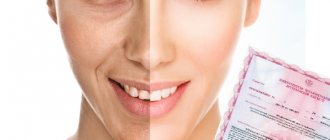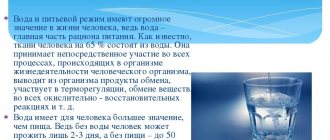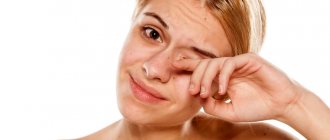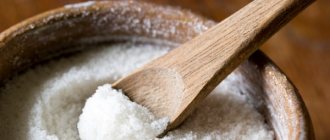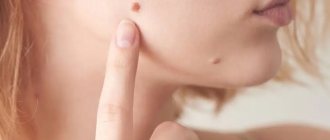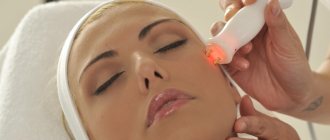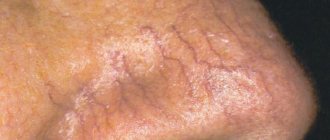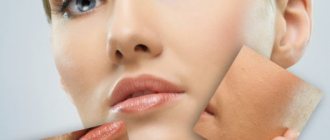Osteoarthritis of the hands is a degenerative-dystrophic pathology that affects the joints and is accompanied by significant changes in cartilage tissue. The disease provokes loss of joint mobility and the appearance of intense pain. Osteoarthritis of the hands occupies a fifth of all cases of arthrosis. Joint damage occurs at a slow pace, so in most cases a person detects symptoms of the disease already at advanced stages. It is for this reason that treatment of the pathology is difficult and lengthy.
What is osteoarthritis of the hands
Damage to the interphalangeal joints of the hands, which is called osteoarthritis, is accompanied by serious degenerative and dystrophic changes in the cartilaginous tissues. This pathology is most often diagnosed in women during menopause, as well as those with a hereditary predisposition to diseases of the musculoskeletal system. In most cases, pathological changes affect the terminal phalanges of the fingers, resulting in the formation of so-called Heberden's nodes. Over time, the joint becomes significantly enlarged and thickened. This process is accompanied by a characteristic crunch in the fingers and pain in the affected area of the fingers.
Risk factors
To date, the exact causes of the development of arthrosis of the hands have not been fully established. But experts identify specific risk factors that can trigger the formation of dystrophic changes in the joints:
- old age - as a result of age-related changes, thinning and decrease in the elasticity of cartilage tissue, as well as resistance to increased loads, occurs, which leads to the disease;
- disturbances in collagen production and metabolic processes in the body - also leads to joint pathologies, for example, rheumatoid arthrosis;
- hormonal imbalance in the body - during menopause, women suffer from calcium deficiency, which contributes to disorders of the musculoskeletal system;
- specificity of professional activity - most often the disease is diagnosed in people whose work involves constant movements of the hands;
- genetic predisposition - a hereditary factor is considered one of the fundamental risk factors in the development of osteoarthritis of the hands .
Joint disease can develop against the background of varying degrees of obesity, microtrauma, or surgery on joints and bone elements. It has been scientifically established that women suffer from osteoarthritis several times more often than men.
Hand rejuvenation with laser
Rejuvenating programs and laser technologies apply not only to the face, neck and décolleté. After all, a woman’s age is revealed by her hands!
Hand rejuvenation with laser 11703
Laser resurfacing is an effective and modern method to quickly make the skin of your hands more elastic, smooth and youthful, especially with pronounced age-related changes. Aesthetic medicine clinics use a combination of advanced rejuvenation technologies using multifunctional lasers for this purpose. The rejuvenating ray will not only rejuvenate your facial skin, but also polish your hands. The goal of laser therapy is to launch the mechanism of natural restoration and renewal of the skin of the hands. Those cells that are no longer able to function fully are finally evaporated with the help of a laser; in response, viable ones begin to divide in order to restore the area damaged by the beam. In seconds, the laser beam creates a mesh frame on the skin from many tiny thermal points (microthermal treatment zones), in which active regeneration begins.
Laser hand rejuvenation 11451
Hand rejuvenation with laser: principle and goals of laser resurfacing
Under the influence of laser therapy, a cascade of processes occurs, which together gives a lasting rejuvenating effect:
- in aging skin, increased synthesis of collagen and elastin is activated,
- restructuring and strengthening of the microvascular bed occurs,
- hydration of the dermis improves,
- blood circulation is normalized, skin tone increases,
- water-lipid balance is restored,
- the activity of melanocytes is normalized: melanin synthesis slows down,
- the walls of small vessels are strengthened,
- The protective and barrier functions of the skin are activated: local immunity is formed.
Hand rejuvenation with laser: effect depends on type
The effect of laser therapy procedures is always impressive after the first session: after a recovery period, the skin color evens out. Depending on age, to achieve maximum effect (skin renewal/rejuvenation), a course of fractional resurfacing sessions is needed.
Fractional laser hand rejuvenation 11550
From procedure to procedure, the old collagen framework is replaced by a new one, the skin literally comes to life: elasticity increases, its texture and relief are evened out, fine wrinkles and sagging disappear, and the shade improves. After a course of such procedures, areas of age-related hyperpigmentation, superficial scars and other defects that accumulate with age disappear. Hands also look much younger due to the tightening effect. The results of fractional laser rejuvenation procedures last for at least a year. The key to a longer lasting effect is additional salon treatments plus regular home care.
If you are not in the mood for a course of laser therapy, but want to achieve quick results, you should prefer laser resurfacing using a diode laser. A specialist can also develop an individual laser rejuvenation program using different types of lasers. So, when looking for a clinic offering laser anti-aging procedures, it is better to choose a salon with the latest generation lasers. Such devices will provide variability and an optimal combination of settings: pulse power and duration, light wavelength, beam diameter, color spectrum.
Laser hand rejuvenation: advantages and disadvantages
An even skin tone is the result that the laser will provide better than biorevitalization or other anti-aging techniques available today for hand care. Thus, the laser is good at eliminating vascular defects, which are age markers of the skin. These are telangiectasia, spider veins, hemangiomas or port-wine stains, as well as areas of hyperpigmentation.
Again, it is important to consider that not all types of laser devices are equally effective in removing vascular pathologies. Some do not have a high selective ability, that is, during their work, selective coagulation of vessels and spots is impossible without damaging surrounding tissues. Using targeted devices, the doctor can carry out high-precision coagulation of vessels of any type and diameter using precisely dosed short light pulses. The temperature in the area of the vessel is maintained optimal for its coagulation, but the surrounding tissues do not heat up and, accordingly, are not damaged. Due to the wavelength, the doctor can achieve a clearly predictable result, reducing the risk of side effects.
Port Wine Stains: Therapy 11566
The advantages of laser hand rejuvenation include the absence of the need for pain relief. Many lasers also provide the possibility of treating after mycoses of the nail plates. Such complex therapy increases the effectiveness and economic feasibility of the procedure.
Laser treatment of onychomycosis 11377
As for the disadvantages, a course of laser hand rejuvenation will cost more than most hand care techniques. It is also important to consider the length of the rehabilitation period - as a rule, it is more difficult (requires more thorough home care) and longer than after other anti-aging procedures. Contraindications for laser hand therapy are the same as for conventional resurfacing.
Symptoms of the disease
The main location of degenerative-dystrophic changes is the articular tissue between the last and penultimate phalanges of the fingers. The disease develops at a slow pace, so many patients do not notice the first symptoms of pathological changes. In later stages, the following symptoms appear:
- hardening of the joints between the phalanges of the fingers;
- curvature of fingers;
- stiffness of movements;
- numbness of the fingertips;
- violations of fine motor skills of the hands;
- the appearance of a characteristic crunch when moving your fingers;
- the occurrence of pain.
Gradually, finger movements cause discomfort, and as the disease progresses, severe pain of a pulling, aching nature. Most often, both joints of the hands are affected. At the same time, the skin on the fingers swells and turns red.
You can read about treatment without surgery for stenosing ligamentitis of the thumb here.
Over time, more and more joints become deformed, they bend in different directions, and a person loses the ability to self-care.
Diagnostics
Diagnosing degenerative-dystrophic disease of the hands is not very difficult, since the disease exclusively affects one group of joints. One of the main diagnostic methods is a visual examination by a doctor and radiography.
In the process of radiography, a picture of pathological changes is revealed, while the disease does not progress to the stage of wrist and elbow arthrosis, and the metacarpophalangeal tissues are also not affected.
Prevention
Wear protective gloves when cleaning your home. This also applies to washing dishes or windows. You can put talcum powder in your gloves to prevent the skin inside from sweating.
In the summer, before sunbathing, apply a protective cream to avoid the appearance of age spots. In winter, wear gloves or mittens and apply a rich cream before going out.
Pay attention when purchasing soap. Choose an emollient taking into account the pH balance of the skin on your hands. Kedma natural soap, rich in minerals and trace elements from the Dead Sea, removes dirt and impurities and restores the skin's natural balance. Wash your hands with warm water and then lubricate them with a nourishing light cream.
Get a manicure, and it should consist not only of cutting the cuticles, but also paraffin or herbal baths and scrubbing.
Drink enough fluids. Do not allow your skin to become dehydrated. Drink 2.5 - 3 liters of fluid not only in summer, but also in winter.
Features of treatment
Conservative and surgical techniques are used to treat osteoarthritis of the hands. In the initial stages of the disease, drug therapy, therapeutic exercises and other methods of physiotherapy are considered the most effective. Surgical intervention is used extremely rarely - in the most severe and advanced cases, when conservative therapy has not brought the expected results. The main problem in the treatment of osteoarthritis is that complete cure of the disease is impossible. The only thing that can be achieved during therapy is inhibition of the progression of the pathology. Treatment of the disease is aimed at performing the following tasks:
- Reducing the inflammatory process.
- Elimination of pain.
- Inhibition of deformation of cartilage tissue.
Properly selected therapy can improve the patient’s well-being and significantly improve his quality of life. Additionally, physiotherapy, exercise therapy, and a special diet are used.
Drug therapy
When the first signs of a degenerative-dystrophic disease of the hands appear, you should contact a traumatologist or rheumatologist, who will select the optimal course of drug treatment. The basis of drug therapy is anti-inflammatory, analgesic and vasodilator drugs, as well as chondoprotectors and multivitamin complexes, which can be produced in various pharmacological forms - injections, tablets, capsules, products for external application.
Anti-inflammatory drugs
The use of anti-inflammatory non-steroidal drugs is aimed at reducing the inflammatory process, as well as pain that occurs when moving the fingers. Most often used:
- Nimesil;
- Diclofenac;
- Ibuprofen;
- Analgin;
- Movalis;
- Colchicine;
- Paracetamol.
The average duration of the anti-inflammatory course is 7-14 days. Along with anti-inflammatory medications, it is recommended to take drugs to protect the gastric mucosa - Phosphalugel, Almagel.
Also, external agents with an anti-inflammatory effect are also used - Diclofenac-gel, Voltaren-gel.
Chondroprotectors
Chondroprotectors are an essential element in the treatment of osteoarthritis of the hands. They are medications designed to improve the structure of cartilage elements and are artificial analogues of the main components present in the structure of cartilage - glucosamine and chondroitin.
- Chondroxide;
- Chondroitin;
- Teraflex;
- Aflutop.
Such pharmacological agents are used exclusively after anti-inflammatory therapy, since chondroprotectors are not effective during active inflammation. Treatment is long-term and takes at least 3-6 months.
Vasodilators
In the treatment of osteoarthritis of the hands, medications with a vasodilating effect are often used. They are used to relieve narrowing of blood vessels that occurs due to painful muscle tension. The following pharmacological agents will help restore normal blood circulation:
- Eufillin;
- Pentoxifylline;
- Actovegin;
- Xanthinol;
- Trental;
- Berlition.
Medicines effectively expand the lumen of blood vessels and activate blood flow in the affected joint tissues.
Benefits of the SmartXide DOT2 laser system
- Lack of any preparation (only excluding possible contraindications)
- Very fast recovery, which will last a few days and during which you can lead a normal lifestyle (with some restrictions)
- Possibility of individual adjustment of the system parameter for a specific patient (impulse duration, coverage area, depth of laser exposure, etc.)
- Control over the process, including ensuring that surrounding tissues do not heat up (SmartTrack algorithm)
- Homogeneous renewal of the epithelium, eliminating the risk of burns and any side effects or complications
- Short duration of the procedure (lasts about 10-15 minutes, anesthetic ointment is used)
- A noticeable, pronounced result that is visible immediately after the procedure and has a cumulative effect, that is, over time it will appear more and more (as skin cells regenerate)
- Affordability: the cost of the procedure will definitely not bankrupt you; our prices will allow every female representative to take care of herself and look younger than her age
